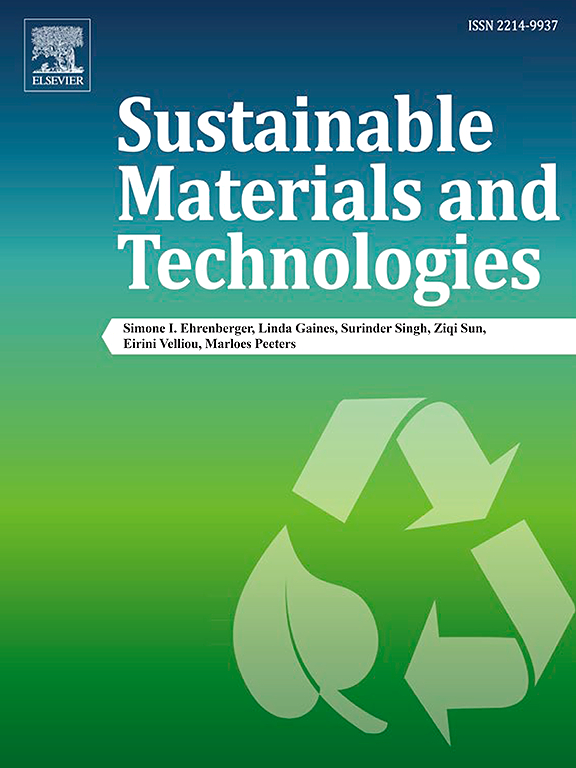A sustainable δ-MnO₂ derived from Amazon rainforest Mn-ore tailings for applications in lithium-ion batteries
IF 8.6
2区 工程技术
Q1 ENERGY & FUELS
引用次数: 0
Abstract
The transition to net-zero emissions by 2050 necessitates the development of sustainable and efficient energy storage systems to complement the rise in renewable energy generation. Lithium-ion batteries (LiBs) are pivotal in this energy transformation, yet challenges remain in developing sustainable, high-performance materials. Manganese oxides (MnOₓ) are promising candidates for LiBs anodes due to their abundance and high theoretical capacity. However, the commercial synthesis of MnOₓ materials is resource-intensive, and the mining processes generate large amounts of environmentally hazardous tailings. In this study, we propose a novel method to recover manganese from mining tailings in the Brazilian Amazon and synthesize δ-MnO₂ as a high-capacity conversion anode material for LIBs. Using a green recovery method involving KOH and H₂O₂, we extracted potassium manganate (K₂MnO₄) from the tailings with a recovery efficiency of 90.3 %,and synthesized δ-MnO₂. The prepared material showed promising electrochemical properties, demonstrating its potential as a sustainable alternative to commercially available manganese oxides. This process not only offers a way to mitigate the environmental risks posed by manganese mining tailings but also provides an economically viable solution for producing high-performance battery materials. The developed methodology can be applied to other manganese-bearing residues and low-grade ores, contributing to the growing demand for battery-grade manganese in a sustainable and circular manner.
从亚马逊雨林锰矿尾矿中提取的可持续δ- mno2,用于锂离子电池
到2050年向净零排放过渡需要发展可持续和高效的储能系统,以补充可再生能源发电的增长。锂离子电池(LiBs)是能源转型的关键,但在开发可持续、高性能材料方面仍存在挑战。锰氧化物(MnOₓ)由于其丰富度和较高的理论容量,是很有前途的LiBs阳极的候选者。然而,MnOₓ材料的商业合成是资源密集型的,开采过程中会产生大量对环境有害的尾矿。在这项研究中,我们提出了一种从巴西亚马逊地区的采矿尾矿中回收锰的新方法,并合成了δ-MnO₂作为锂离子电池的高容量转化阳极材料。采用KOH - h2o绿色回收法,从尾矿中提取锰酸钾(K₂MnO₄),回收率为90.3%,并合成了δ-MnO₂。制备的材料表现出良好的电化学性能,证明了其作为市售锰氧化物的可持续替代品的潜力。该工艺不仅提供了一种减轻锰尾矿带来的环境风险的方法,而且为生产高性能电池材料提供了一种经济可行的解决方案。所开发的方法可以应用于其他含锰残留物和低品位矿石,以可持续和循环的方式为电池级锰的不断增长的需求做出贡献。
本文章由计算机程序翻译,如有差异,请以英文原文为准。
求助全文
约1分钟内获得全文
求助全文
来源期刊

Sustainable Materials and Technologies
Energy-Renewable Energy, Sustainability and the Environment
CiteScore
13.40
自引率
4.20%
发文量
158
审稿时长
45 days
期刊介绍:
Sustainable Materials and Technologies (SM&T), an international, cross-disciplinary, fully open access journal published by Elsevier, focuses on original full-length research articles and reviews. It covers applied or fundamental science of nano-, micro-, meso-, and macro-scale aspects of materials and technologies for sustainable development. SM&T gives special attention to contributions that bridge the knowledge gap between materials and system designs.
 求助内容:
求助内容: 应助结果提醒方式:
应助结果提醒方式:


